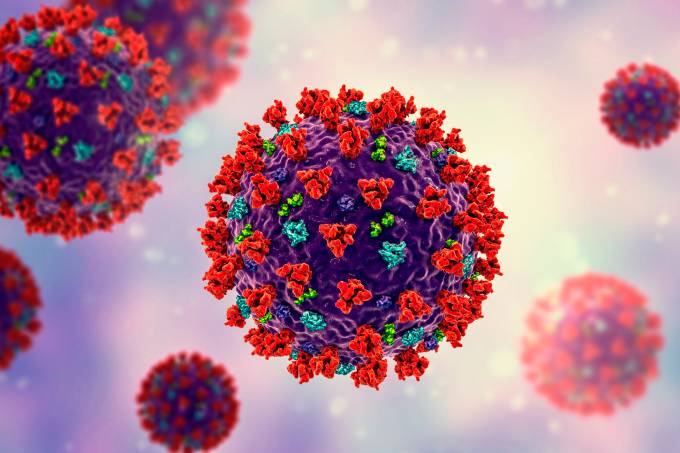Protocol Detail


DIABETIC KETOACIDOSIS
Diabetic ketoacidosis (DKA) is a dangerous complication faced by people with diabetes which happens when the body starts running out of insulin. DKA is most commonly associated with type 1 diabetes, however, people with type 2 diabetes that produce very little of their own insulin may also be affected.
Diagnosis
Generally occurs in Type 1 Insulin Dependant Diabetes Mellitus.
Initial presentation of >30% of newly diagnosed diabetics.
Overall mortality
Look for precipitating causes:
· Acute stress,
· Infection,
· Myocardialm or cerebral infarction,
· Surgery,
· Pregnancy,
· Trauma,
· Medication errors,
· Poor compliance.
Symptoms include early polyuria, polydipsia, nausea/ vomiting, weakness, altered mental function.
Clinically dehydrated, tachycardia, hypotensive, kusmaul breathing, abdominal tenderness,
Biochemical triad of hyperglycaemia (BSL > 14 mmol/1), metabolic acidosis (pH <7.30, HCO3 <15
mmol) & ketosis.
Hypokalaemia on admission is a sign of severe total body depletion & represents a critical status.
Remember:
· Osmolarity =2( + ) + Glucose + Urea. Normal = 285 – 300 mosmol/1.
· Anion Gap = ( +) – (C1 + HC) Normal =10-17 mmol/1.
Correction factor for Na: Sugar-5/3 + Na.
Management
1. IV access,
2. ABC’s & Resuscitation as indicated,
3. FBC, U&E’s, LFT’s, Lipase, Ca, Mg, PO4, venous gasses (arterial if unwell), Troponin-T,
4. Blood Cultures’s & Mid Stream Urine if febrile,
5. Consider NGT & Catheterise,
6. CXR,
7. ECG,
8. Continuous monitoring,
9. IV fluids:
· Ultimately tend to need 1 over 24 hours,
· Initially N.Saline 11 over 1 hour (500ml boluses if shocked), then 11 over 2 hrs,
· Use 0.45% Saline if Na>155 mmol/1 or Osmolaity>320 mosm/1,
· Subsequent fluids guided by clinical assessment of HR, hydration,
· Once Blood Glucose Level <14mmol/1 commence 0.45% Saline 5% dextrose 11
over 4 – 6 hours.
10. Check every 1-2 hours initially until settled:
· Initial plasma levels are artificially raised (due to acidosis, shift & insulin deficiency),
· DKA patients will require .0 – 5.0 mmol/kg,
· Withhold KCI if anuric,
· Give 20 mmol/hr initially.
· Then give
o 40 mmol/hr < 3 mmol/1,
o 30 mmol/hr 3-4 mmol/1,
o 10 mmol/hr 4-5 mmol/1&,
o Cease if >5 mmol/1.
11. Insulin:
· Aim to reduce blood glucose levels
· Initially check Blood glucose level every hour,
· Withhold insulin if >5 mmol/1,
· IV Actrapid 10 units stat,
· IV Units Actrapid infusion sliding scales:
50 Units Actrapid Insulin in N.Saline made up to 50mls (=1 unit/ 1 ml).
· If Glucose levels dropped by < 4 mmol/1 in first hour double infusion rate.
12. Continue IV fluids & insulin infusuion until ketosis settles,
13. Consider use of sodium bicarbonate if persistent acidosis with pH < 6.9 & developing
circulatory collapse,
14. Treat precipitating cause, infection etc,
15. Consider DVT prophylaxis if co-morbidities present (elderely, CCF, Malignancy etc),
16. Keep Nill Per Oral,
17. Beware of headache & altered behavior indicating possible cerebral oedema. May be
followed by hyponatraemia, bradycardia, hypertension & respiratory depression,
18. Continue treatment until pH > 7.35, bsl < 14 MMOL/1 & no urinary ketones. Then
commence Subcutaneous treatment & stop insulin infusion hours later,
19. Typical s/c insulin requirements are 1 Unit/kg given as:
· 2/3 in the morning 1/3 in the evening ½ hour prior to meal &
· 2/3 of each dose intermediate acting & 1/3 short acting.
20. Usually require hospitalization.
APPENDIX FOR MANAGEMENT OF CHILDHOOD DKA
Assess degree of dehydration:
· Mild (<4%) – No clinical signs.
· Moderate (4-7% - Detectable dehydration (reduced skin turgor, poor capillary return).
· Severe (>7%) – Poor perfusion, reduced BP, shocked.
Fluid replacement:
If hypoperfusion resuscitate with normal saline 10ml/kg & repeat until perfusion re-established.
Commence rehydration with normal saline at the following rates (mLs/hour) to be given evenly over
48 hours:
Keep Nill Per Oral until alert & stable (can suck on ice only).
Insert NGT if comatose or recurrent vomiting.
Consider oral rehydration only after 24-36 hours if metabolically stable.
Insulin:
Add 50 units of Actrapid Insulin to 49.5 mLs normal saline (1 unit/ml).
Start insulin infusion at 0.1 unit/kg/hour in newly diagnosed or known diabetics with BSL >
15 mmol/1. Otherwise start at 0.05 units/kg/hour in those who have already received their insulin &
whose BSL is <15 mmol/1.
Only discontinue infusion after BSL < 12 mmol/1, pH > 7.30 and HHCO3 > 15. Stop the infusion 30
minutes after the first sc insulin injection (usually just before a meal).
Potassium:
Start KCL at 40 mmol/1 if body weight < 30kg, or 60 mmol/1 if body weight >30kg.
Check levels every 2 hours.
Don’t give any if K+>5.5 mmol/1 or if anuric.
Bicarbonate:
Usually unnecessary- continuing acidosis reflects under-resuscitation!
Consider small amounts if very sick & pH < 7.0 with HCO3 < 5 mmol/1.
HCO does in mmol=0.15 x weight kg x base deficit given over 30 minutes.









